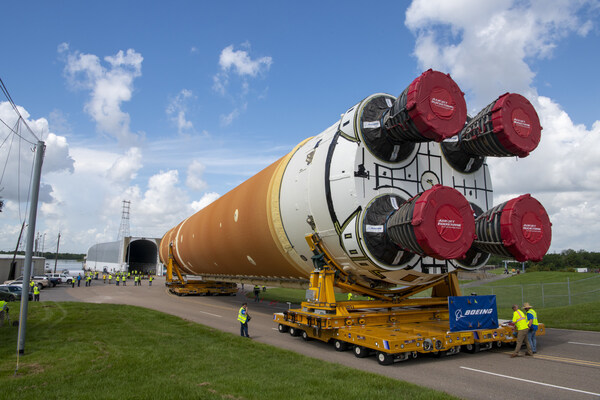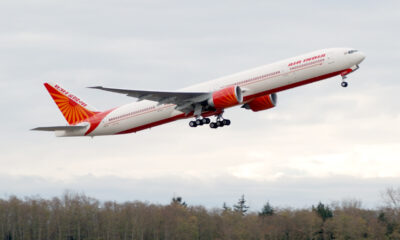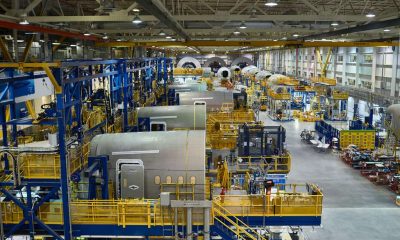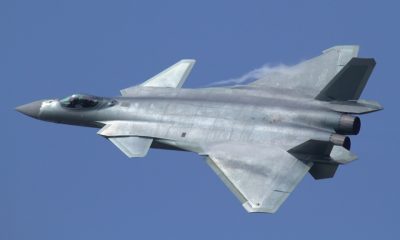Aerospace
Honda Aircraft Company Announces Plan to Commercialize New Light Jet

The HondaJet 2600 Concept, an entirely new light jet that was initially displayed at the NBAA Business Aviation Convention & Exhibition (NBAA-BACE) in 2021, will now be made commercially available, according to a recent announcement by Honda Aircraft Company.
The Honda Aircraft Company’s new light jet, which will be sold alongside its current very light jet model, the HondaJet Elite II, represents a new product line for the company and is targeted for type certification in 2028, according to the company.
Did you know these 10 incredible facts about Honda jet ?(Opens in a new browser tab)
Since its debut at the NBAA-BACE in 2021, the new light jet program has received a favourable response from the market. The new aircraft will deliver a medium-sized jet experience while outperforming the performance, comfort, and efficiency of typical light jets. With a quiet, roomy interior that is suitable for long-distance travel and the capacity to seat up to 11 passengers, it is intended to be the first light aircraft in the world to be able to fly nonstop across the United States. The aircraft can also be operated by a single pilot.
Honda Aircraft Company Reveals Latest Aircraft – the HondaJet Elite II(Opens in a new browser tab)
Additionally, based on Honda Aircraft Company’s commitment to lowering carbon emissions, the new light jet will offer unmatched fuel efficiency, with up to 20% better fuel efficiency than typical light jets and over 40% better fuel efficiency than medium-sized jets during a typical mission.
Honda Aircraft Company has identified key suppliers for the next light jet and has entered into strategic supplier agreements with Aernnova for aerostructures and components, Garmin for avionics, Spirit AeroSystems for the fuselage, and Williams International for engines. The new light jet’s engineering concepts are being completed by Honda Aircraft Company, and fabrication work is already in progress.

Aerospace
Boeing Transfers Rocket Stage to NASA, Paving Way for Human Moon Mission

Boeing has achieved a significant milestone by providing NASA with the second core stage of the Space Launch System (SLS) rocket.
This crucial component, crafted at NASA’s Michoud Assembly Facility (MAF), is set to propel the Artemis II crew into lunar orbit, marking humanity’s return to deep space after a 50-year hiatus.
The monumental Boeing-built rocket stage, the largest element of the Artemis II mission, will embark on a journey aboard the Pegasus barge, traveling 900 miles to NASA’s Kennedy Space Center.
Comparison of two legendary aircraft B777x vs B747 aircraft:Click here
Upon arrival, it will be meticulously integrated with other essential Artemis II components, including the upper stage, solid rocket boosters, and NASA’s Orion spacecraft within the iconic Vehicle Assembly Building. This intricate integration process is a vital step toward the eagerly anticipated Artemis II launch, slated for 2025.
“Boeing-built products helped land humankind on the moon in 1969, and we’re proud to continue that legacy through the Artemis generation,” remarked Dave Dutcher, vice president and program manager for Boeing’s SLS program. “Together, with NASA and our industry partners and suppliers, we are building the world’s most capable rocket and paving the way to deep space through America’s rocket factory in New Orleans.”
NASA, Lockheed Martin Reveal X-59 Quiet Supersonic Aircraft:Click here
The delivery of Core Stage 2 marks a significant achievement in the evolution of the SLS rocket. Towering over 200 feet and powered by four RS-25 engines, this core stage, coupled with two solid-fueled booster rockets, will generate a staggering 8.8 million pounds of thrust. This immense power is crucial to launching Artemis II and future missions into the vast expanse of space.
The SLS rocket stands unparalleled in its capability to transport both crew and substantial cargo to the moon and beyond in a single launch. Its extraordinary capacity will facilitate the delivery of human-rated spacecraft, habitats, and scientific missions to destinations including the moon and Mars, ushering in a new era of space exploration.
-

 Travel1 week ago
Travel1 week agoAir India to Expand US Operations with Three New Routes After a Decade
-

 Travel2 weeks ago
Travel2 weeks agoWhy We Should Avoid These Stamps in a Passport
-

 Airlines1 month ago
Airlines1 month agoInvestigations Reveal Fake Chinese Titanium in Boeing and Airbus Jets
-

 Tech4 weeks ago
Tech4 weeks agoChina’s CATL Plans 1,800-Mile Electric Plane Launch by 2027
-

 Airport3 days ago
Airport3 days agoTop 10 Largest Airports in the World by Size
-

 Aerospace4 weeks ago
Aerospace4 weeks agoChina’s Fighter Jets Turn Wings into Autonomous Drones
-

 Airlines4 days ago
Airlines4 days agoAir India Rolls Out A350s for Delhi-New York JFK and Newark Routes
-

 Defence3 weeks ago
Defence3 weeks agoBoeing Enhances Chinook with New Engines and Block II Upgrades at $96 Million







